Hamstring Tears: Diagnosis, Rehabilitation and Prevention
Hamstring injuries are among the most common soft tissue injuries in sport and often pose a frustrating challenge for athletes and active individuals alike. At
Total Body Physio, we see these injuries frequently—whether in weekend warriors, professional athletes, or everyday gym-goers. With an accurate diagnosis, treatment, and education, however, most hamstring injuries can be successfully rehabilitated, minimising the risk of recurrence.
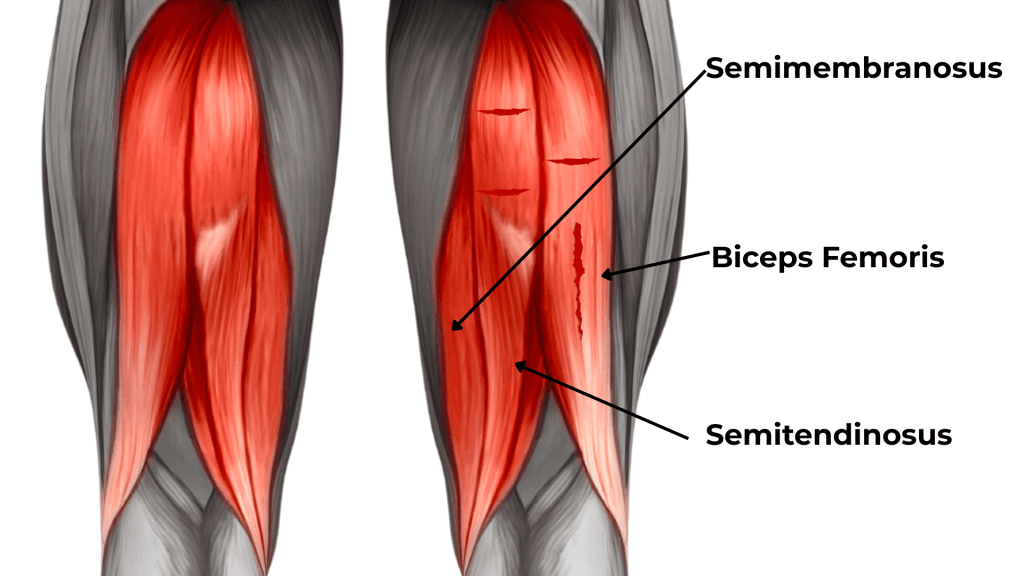

What is an ACL Injury?
An ACL injury involves a tear or rupture of this ligament. Injuries typically occur during sudden stops, changes of direction, or pivoting movements—often without contact.
These injuries often occur during non-contact actions like pivoting, sudden stopping or rapid directional changes and may be accompanied by damage to the menisci or MCL. Anterior cruciate ligament (ACL) injuries are common and serious, particularly in active individuals and athletes in sports like netball, soccer, skiing, AFL, basketball, and rugby (Allot et al., 2022). Without proper rehabilitation, ACL injuries can lead to knee instability, reduced function, and early osteoarthritis (Davis et al., 2021).
What is a Hamstring Tear?
The hamstrings are a group of three muscles at the back of the thigh—biceps femoris, semitendinosus, and semimembranosus. These muscles cross both the hip and knee joints and play an essential role in knee flexion, hip extension, and controlling leg deceleration during running, jumping, and kicking.
A hamstring tear occurs when the muscle or tendon fibres are overstretched or overloaded, causing varying degrees of damage. Tears may be sudden (acute) or build gradually (chronic overload), depending on the mechanism of injury.
Prevalence of Hamstring Tears
Hamstring injuries account for approximately 10% of all injuries in field-based team sports (Maniar et al., 2023). Their prevalence has been increasing steadily in recent years due to rising demands in sport and insufficient preventive strategies.
- In professional soccer, they account for 15–30% of all injuries per season (Liu et al., 2022).


- Rates are 18–27% in track & field athletes (Nguyen et al., 2021).


- In Australian Rules Football, rates reach up to 23% annually (Smith et al., 2023).


A key concern is recurrence. Studies show up to 33% of hamstring tears recur, often with greater severity, especially when rehabilitation has been incomplete (Martin et al., 2022).
Causes
Hamstring tears often occur during high-speed movements that combine eccentric loading (muscle lengthening under tension) with hip flexion and knee extension. They can also be a result of a stretch type injury.
Common scenarios include:
- Sprinting: Most commonly injured during the late swing phase when the hamstrings act eccentrically to decelerate the leg (Danielsson et al., 2020).
- Kicking or Lunging: Especially when over-striding or overstretching.
- Sudden Acceleration/Deceleration: Quick changes in direction or stopping suddenly.
- Stretch-type Injuries: Occur in ballet, gymnastics or martial arts, often involving overstretching with hip flexion and knee extension.


Type 1 vs Type 2 Hamstring Strains
Hamstring strains are commonly categorised into two distinct types based on the mechanism of injury and the muscle involved.
Type 1 hamstring strains typically occur during high-speed running, particularly during the terminal swing phase when the hamstring is lengthening under load to decelerate the leg. These injuries most commonly affect the long head of the biceps femoris and are often seen in sports like AFL, soccer, and athletics. In contrast, Type 2 hamstring strains usually occur during activities involving excessive stretching or lengthening of the hamstrings when knee extension is combined with hip flexion, such as high kicking, yoga, or dancing. These often involve the proximal free tendon of the semimembranosus and tend to be slower to heal due to the involvement of the connective tissue.
Understanding the strain type helps guide treatment, as Type 2 injuries typically require a longer and more cautious rehabilitation focusing on progressive loading and tendon repair for effective recovery (Brukner et al, 2023).
Grading of Hamstring Tears
Hamstring injuries are classified into three grades:
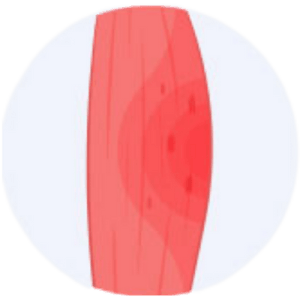

Grade 1 (Mild: 10-15% tearing of fibres): Minor tearing of muscle fibres with minimal strength or function loss. Usually involves tightness and mild pain during activity.
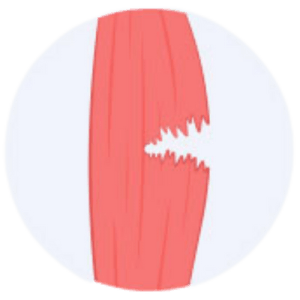

Grade 2 (Moderate: 15-50% fibres torn): Partial muscle tear with moderate pain, swelling, weakness on testing, and impaired movement.


Grade 3 (Severe: >50%): Significant to complete muscle or tendon rupture, often accompanied by severe pain, swelling, bruising, and marked functional loss.
Accurate grading via clinical assessment and, when indicated, MRI imaging is essential for directing appropriate rehabilitation (Lempainen et al., 2021).
Risk Factors
A combination of intrinsic and extrinsic factors increases the likelihood of a hamstring tear:
- Previous injury: Strongest risk factor. A history of previous hamstring injury increases re-injury risk by up to 3.6 times (Martin et al., 2022).
- Muscle Overload: This occurs when the hamstring muscles are overworked beyond their capacity, often during activities that involve sudden acceleration or deceleration, such as sprinting or jumping. Overloading the muscle, especially during the eccentric phase of muscle contraction is a key cause of hamstring injuries (Chumanov et al., 2012).
- Muscle imbalances: Weak hamstrings relative to quadriceps are linked to increased injury risk (Rudisill et al., 2022).
- Fatigue: Tired/fatigued muscles are less able to absorb forces and the energy of sudden movements, making them more susceptible to tears (Smith & Lee, 2023).
- Reduced flexibility or limited hip mobility: Tight hamstrings are more prone to tears. Regular stretching and flexibility exercises can help reduce this risk. (Heiderscheit et al., 2022).
- Inadequate Warm-Up: Failing to properly warm up before engaging in physical activity can leave the hamstrings unprepared for the demands placed on them, increasing the likelihood of injury. (Monajati et al., 2016).
- Poor glute/core activation patterns: Inadequate activation of the gluteal or core muscles can lead to compensatory overuse of the hamstrings, increasing the risk of injury. (Hickey et al., 2017)
- Sudden spike in training loads or match exposure: Rapidly increasing the intensity or duration of physical activity without allowing the body to adapt can strain the hamstrings. (Chu & Rho, 2016).
- Older age: Risk increases in athletes over 23 (Orchard et al., 2013).
Common Symptoms & Diagnosis
A thorough physio examination will include range of motion, strength testing, palpation, and functional movement testing. It will also assess biomechanics to determine if predisposing factors are present along the kinetic chain. Imaging such as MRI can used to assess severity and confirm diagnosis in severe cases.
Accurate strength testing is common using force plates and dynamometers along the rehabilitation journey. In our clinic we use the AxIT strength testing system.
Hamstring tears typically present with:
- Sudden, sharp pain in the back of the thigh during high-speed movement
- Swelling and bruising (especially with Grade 2–3 injuries)
- Tenderness on palpation of the muscle belly or origin
- Weakness on isometric muscle testing (Grade dependent)
- Reduced range of motion: restricted straight leg raise(SLR)/bent knee SLR
- Difficulty walking, especially with higher-grade tears


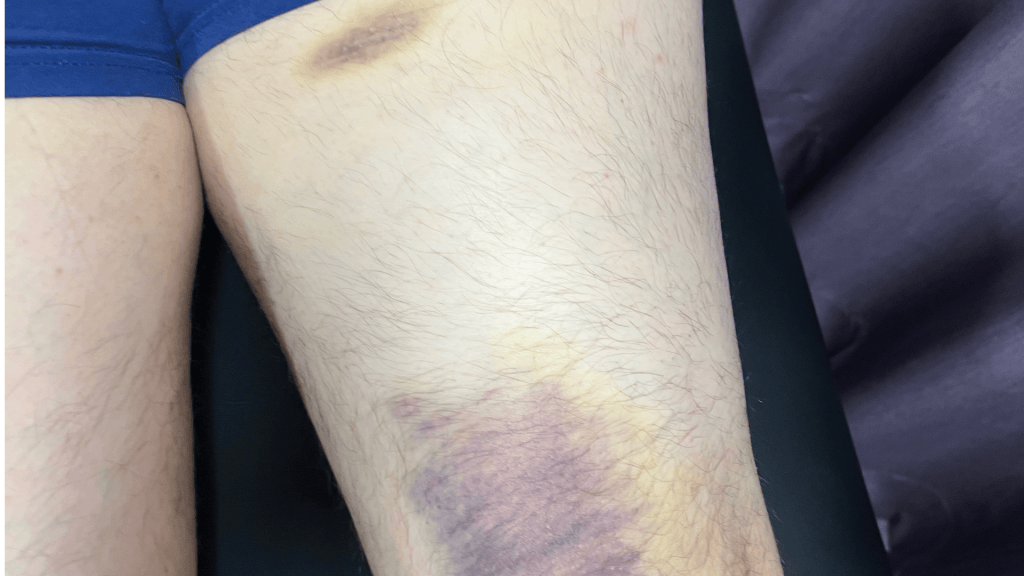

The Role of Physio in Recovery
Physiotherapy is the cornerstone of hamstring injury rehabilitation. Early intervention leads to improved outcomes and reduces the risk of re-injury. At Total Body Physio, our rehab protocols are evidence-based and customised to the individual, including:
- Acute Management: Ice, compression, offloading, and pain management during the early inflammatory phase (0–5 days).
- Progressive Loading: Begin with isometric exercises, then advance to concentric and eccentric loading (Askling et al., 2014).
- Neuromuscular Re-education: Ensures correct muscle sequencing between hamstrings, glutes, core/trunk and considers whole kinetic chain.
- Running & Agility Retraining: Address running and sprint mechanics and gradual return to speed work.
- Strength Testing: Using our AxIT system, we monitor force production and side-to-side asymmetry. We also monitor quads to hamstring ratios.
- Return-to-Sport (RTS) Criteria: Objective testing guides safe RTS, including strength ≥90% of unaffected side and negative Askling H-test (Freckleton et al., 2014).
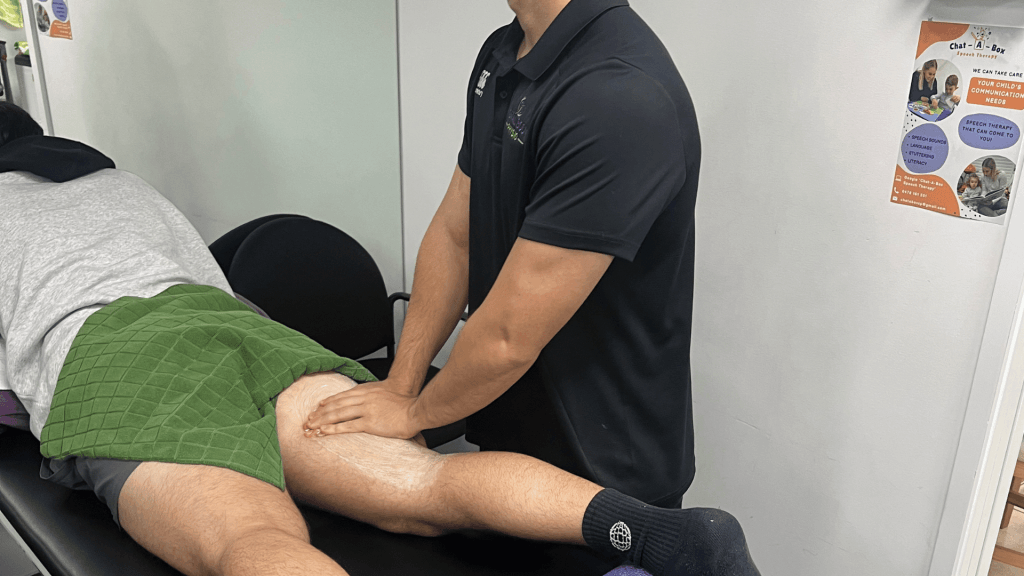

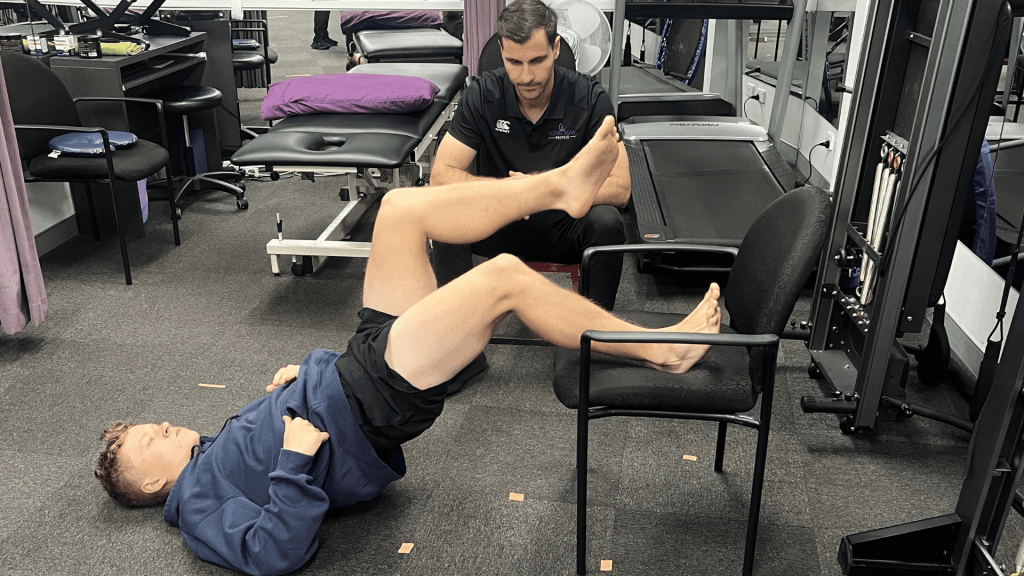

Prevention of Future Tears
Preventing hamstring tears—and especially recurrence—relies on a few key strategies:
- Eccentric Strengthening: Exercises such as Nordic hamstring curls have been shown to significantly reduce injury risk by improving fascicle length and sarcomere number, making muscles more resilient to stretch (Doe et al., 2024).
- Neuromuscular Control: Addressing gluteal and core control enhances movement efficiency and reduces overload; and programs focused on coordination, balance, and muscle control help improve the body’s ability to absorb and distribute forces (Geraci et al. 2024).
- Balance Flexibility & Mobility: Ensure adequate hip flexor and hamstring length to support efficient movement (Heiderscheit et al., 2022).
- Warm-Up Routines: A thorough warm-up with dynamic stretching and activity-specific drills prepares the muscles for intense exercise (Rudisill et al. 2023).
- Addressing muscle imbalances: Correcting any imbalances between the hamstrings and quadriceps ensures optimal function (Geraci et al. 2024).
- Load Management: Gradual progression of intensity and volume is essential to avoid overtraining-related injuries.
Recent studies by Johnson et al. (2023) have shown that athletes who adhere to a structured load management program reduce their risk of overuse injuries by 30%.
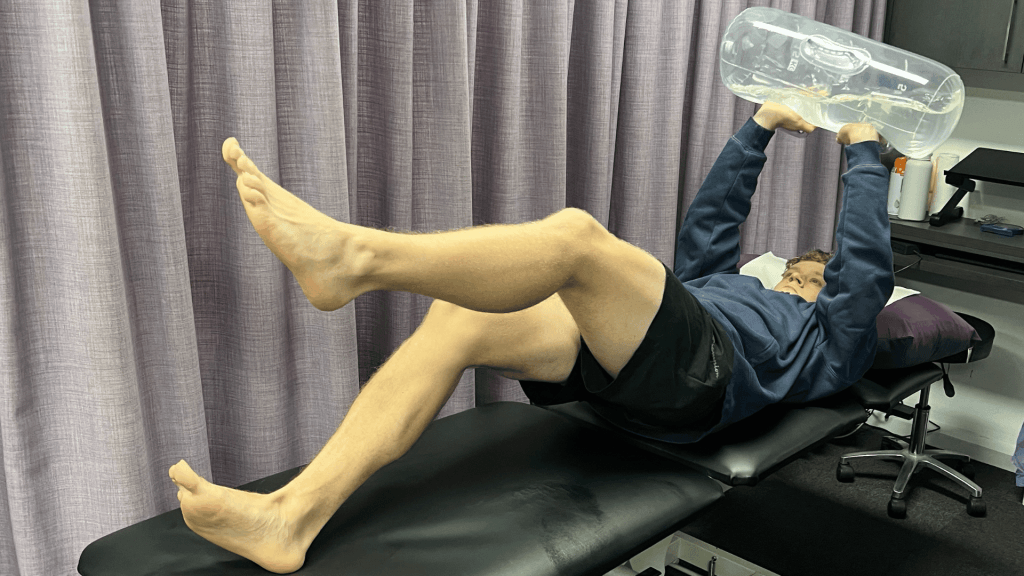

Final Thoughts
Hamstring injuries are common, frustrating, and often recurrent—but with the right care, they are also highly treatable. At Total Body Physio, we use the latest research and rehabilitation technologies to not only manage acute injuries but also identify the movement patterns and imbalances that contribute to hamstring overload in the first place.
If you or someone you care for has an injury, a flare up, requires some rehabilitation or experiences an increase in pain, give the clinic a call on 9713 2455 or book online.